Need help with cooking steak on the griddle? Whether you have a Blackstone griddle or a different flat top grill, this post will give you some tips for cooking the best griddle steak!
If you’ve been cooking on a griddle for a while now, you know that it’s basically like a giant skillet… There’s a large flat heating surface that cooks your food. And pretty much anything that you can cook in a skillet on your stovetop can also be prepared on a griddle. Including a perfect steak!
But cooking steak on a griddle is definitely different than cooking it on a charcoal grill or even in a cast iron skillet.
And if you don’t have a lot of experience cooking steaks on a griddle or flat top grill, then you may be nervous about messing up your perfectly marbled ribeye or filet mignon, or getting the technique just right. Not to mention, it seems like every video that you watch or every article that you read about the best way to get juicy steak gives conflicting information.
Which brings me to an important point about cooking steak in general…
There are a hundred different ways to cook a steak, and really, there is no “right” or “wrong” way to do it. Instead, what makes the “best steak” is mostly about preference. Do you prefer more of a beefy taste or do you like a more seasoned steak? Do you like a darker steak crust? Do you prefer your cooked steak medium rare or medium? What are your favorite ways to finish your steaks?
It’s all about preference. And maybe a few tips for cooking steaks on the Blackstone griddle that I consider to be “non-negotiable”.
Here are some griddle cooking tips and things to consider for the best Blackstone steak:

The Benefits of Cooking Steaks on a Griddle
Now, let me start off with a disclaimer… I actually prefer steaks cooked on a grill. Like if it was the last steak I ever got to eat, it would be a forward seared ribeye cooked on a charcoal grill. But are steaks good cooked on a griddle? They definitely can be!
And there are a few benefits to cooking steaks on the versatile Blackstone griddle:
- You can easily control the heat with a turn of the griddle knobs.
- The large griddle surface allows you to cook your favorite sides for griddle steak at the same time, without dirtying up more dishes.
- Most griddles get super hot – perfect for a good sear and the perfect steak crust!
- You can easily set up hotter and cooler zones and move your steaks to the hot side of the griddle if needed.
My Top 3 Tips for Cooking the Best Griddle Steaks
A lot of the decisions about how you’re going to make your Blackstone steak are based on personal preference, but these steak cooking tips have always resulted in delicious flat top grill steak for me:
Tip #1: Pat the steak dry with paper towels before seasoning.
Cooking steaks on a Blackstone griddle starts well before you actually turn the griddle on. It starts with how you prep your meat and set yourself up for success.
Now there are a ton of ways to prep your steaks before cooking them, whether it be a simple seasoning with salt only, or bringing them to room temperature before putting them on the griddle, etc. All of that is based on personal preference. But one thing that I would recommend to everyone is to dry your meat before seasoning.
Just remember this:
Dry meat = crust. Moist meat = steam. Especially on the griddle.
Cooking a steak on a griddle is much different than cooking it on a grill (you’ll miss those beautiful grill marks for one!). With a regular grill you can get away with not drying your meat because the grill grates allow more air flow under the steak. However, a Blackstone steak cooks on a solid surface. There is no space between the heating element and the meat. The entire surface of the meat is in contact with the heat, and there is no air flow to help keep the steak drier.
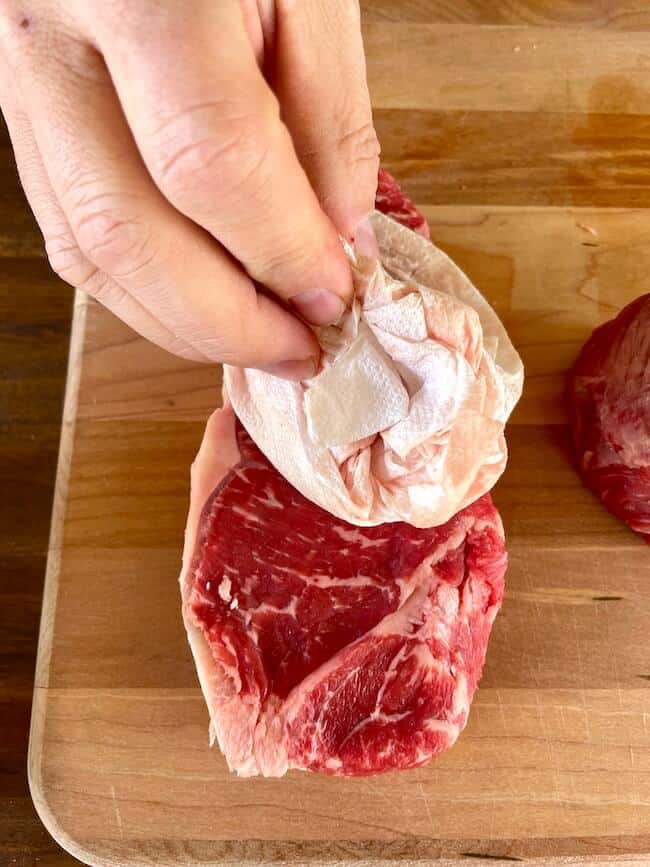
To dry your steaks, simply take a wad of paper towels and dab the excess moisture off the meat. And be sure that you don’t set your steaks right back down in the wet space on your plate or cutting board.
Tip #2: Make sure your griddle is HOT.
The optimal searing temperature for steaks on the griddle is about 450 – 500 degrees F, or a medium-high heat, if you have a thicker steak that won’t overcook at that high of a temp, like New York strip steaks or filet mignon.
You can definitely use a temperature gun to check how hot your griddle is, but I usually just look for wisps of smoke. Depending on what type of griddle or flat top grill that you have, you should be able to get to that perfect searing temperature if you preheat on medium to medium-high for about 10-15 minutes.
Notice how my Blackstone griddle is smoking in the photo below? That high griddle temperature resulted in beautifully-cooked and flavorful filet mignon and New York strip steak:
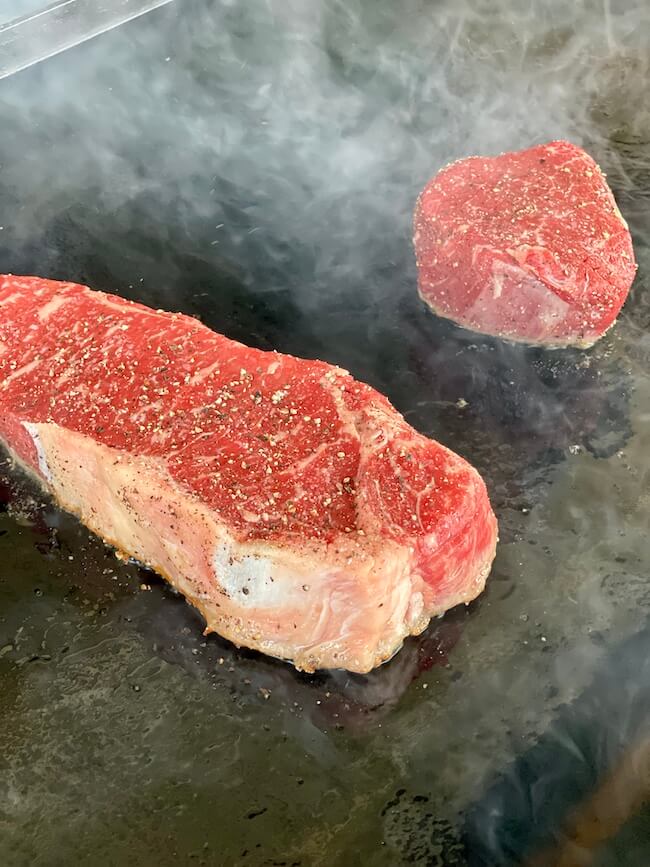
Another important note about the griddle temp – When you flip your Blackstone steaks on the griddle, it’s important to flip them to an empty space. You don’t want to just flip them right over where they were originally. That’s because the area that is right underneath your cold steak will be cooler than a fresh spot on the griddle, and even 30 degrees can make a big difference when you’re trying to achieve the perfect sear.
The same principle applied to the high end steakhouse where I was the Executive Chef for 4 years… Even on an open flame grill, we would always flip the steaks to a fresh spot on the grill grates for optimal crust.
Bottom line – a hot griddle surface gives you a nice sear and a great crust on your Blackstone steak.
Tip #3: Use a meat thermometer.
The most important thing when cooking a delicious steak, whether on a griddle or a grill or in a cast iron pan, is to get the steak to the internal temperature that you like.
There are a ton of different ways to cook an amazing steak… some restaurants cook steaks in a 1500 degree oven… others swear by a 900 degree oven… some use an open fire grill… the list goes on and on.
But one thing that is constant is getting the internal temperature of your steak just right.
There is a way to gauge the internal temp of your meat by feeling alone (you’ve probably heard of this hand test), but most home cooks haven’t had the luxury of refining that test on hundreds of steaks, and they may not want to start experimenting on a $20 cut of meat.
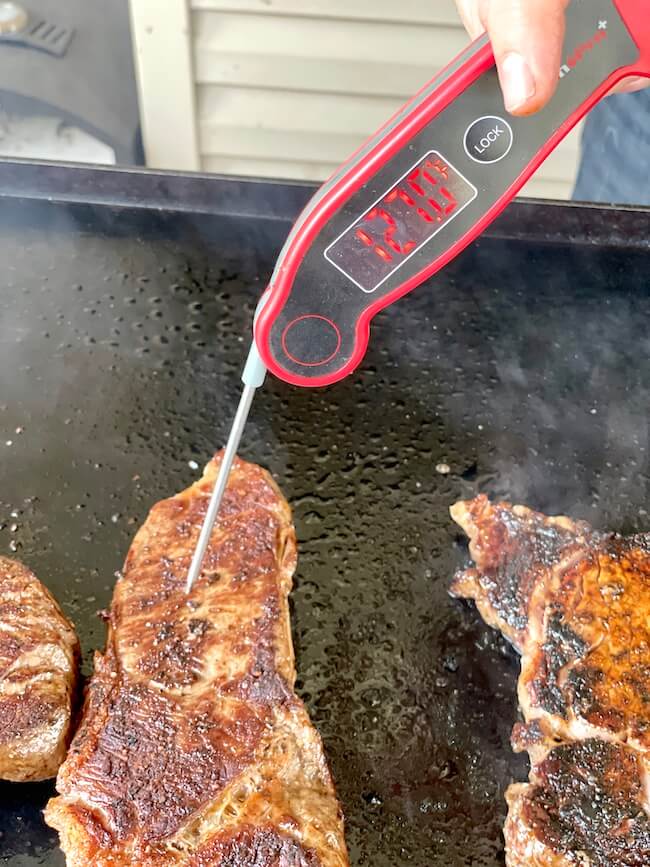
That’s why I recommend an instant-read thermometer.
You can pick up a good meat thermometer for about $20-$30, and you’ll get a fast and accurate reading of the internal temperature of your meat, whether you’re cooking chicken breasts, pork loin, or steak.
*You can go here to see my favorite griddle accessories, including the instant read thermometer that I use and love!
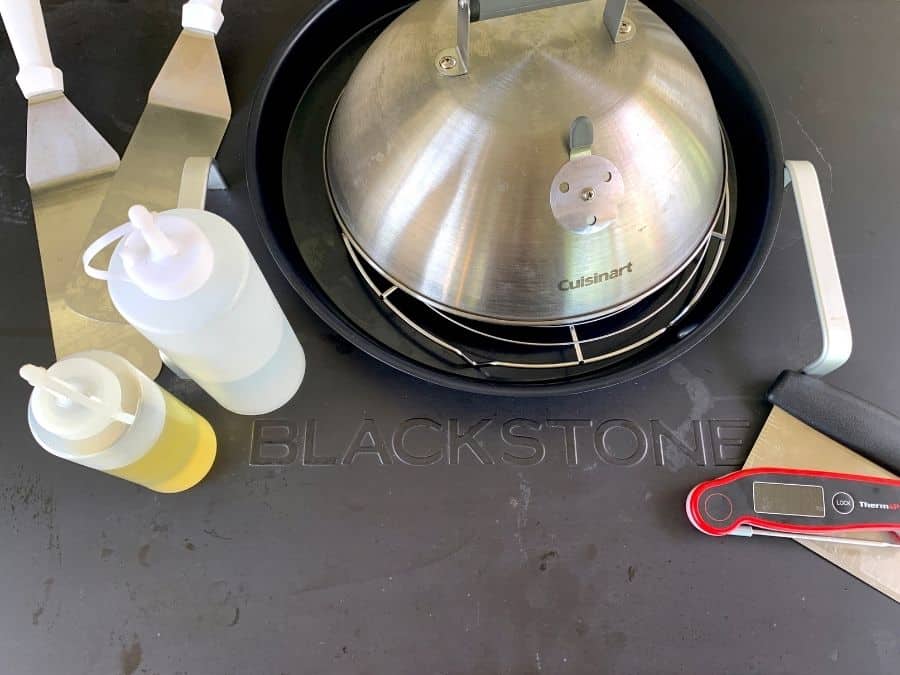
Other Tips for Cooking Steak on a Griddle
Other than my three “non-negotiable” tips for cooking griddle steaks, there are a ton of other opinions on how to cook steaks on a griddle. In fact, if you asked 10 different people how they like to cook steaks on the flat top grill, you’ll probably get 10 different answers.
Some people swear by bringing the meat up to room temperature before putting it on the griddle. Others say you MUST do a dry salt brine. And someone else may swear that you need to flip your steaks often, instead of just flipping once or twice during the cooking time.
So you see, there are a hundred different ways to cook steak on the griddle.
Here are some other things to consider when you’re game-planning how to cook griddle steak:
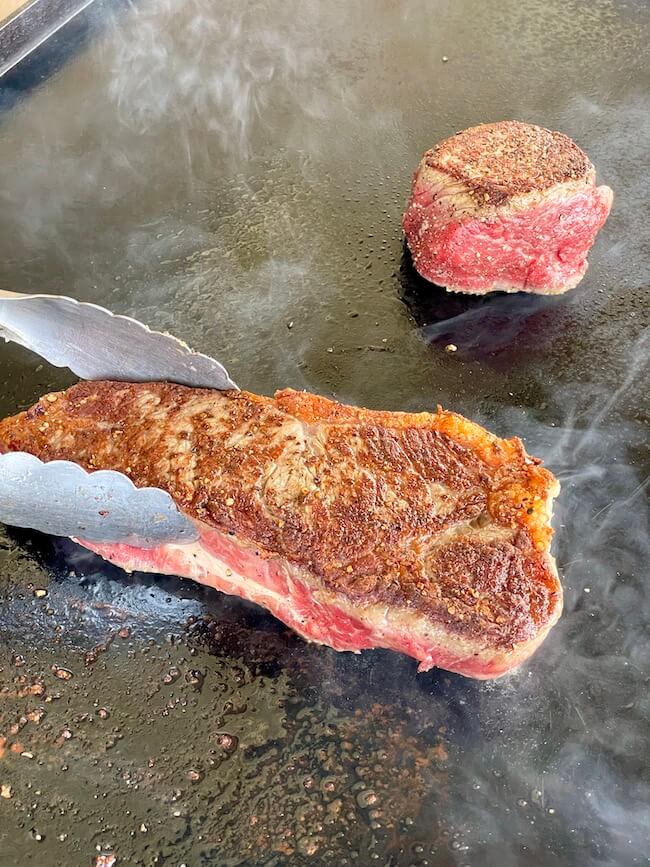
The temperature of the steak when it goes on the griddle
What temperature your steak is before you put it on the griddle is another debatable topic…
Some people swear by taking your meat out of the refrigerator about 1-2 hours before cooking to bring it up to room temperature. But we didn’t have that luxury in an actual steakhouse restaurant kitchen. I would hate to see how the health inspector would have responded if he came in and saw a hundred steaks out on the counter and out of refrigeration. Especially given that the “danger zone” for food temperature is 40 – 140 degrees F, and if your steaks are room temp, then they’re technically in that danger zone.
Still, there are some merits to leaving your steak out for an hour before you put it on the griddle, especially for thicker cuts.
Overall, my recommendation is to experiment with different methods, cooking it right from the refrigerator or leaving it out on the counter for 30-90 minutes to determine which way you prefer. Though I doubt that you’ll see a noticeable difference.
Binder or no binder
I’m sure you’ve heard people say that a great steak shouldn’t need any sauces or extra seasonings. And I agree that great quality beef doesn’t need much to taste fantastic. But if you’ve watched me cook on YouTube, then you know that I also preach that you should cook what you like… and if that means slathering your ribeye in barbecue sauce, then more power to you!
*By the way, we love a barbecue sauce or yellow mustard binder on our charcoal-grilled ribeyes, that’s why I mention it. The sugars in the barbecue sauce caramelize on the grill and create an awesome, slightly sweet crust.
Binder vs. no binder is another matter of preference. However, I would say to use caution if you choose to go with a binder on a griddle steak. Depending on what type of binder you choose, it could be more prone to burning on the flat griddle surface… Much different than using a binder on a regular grilled piece of meat.
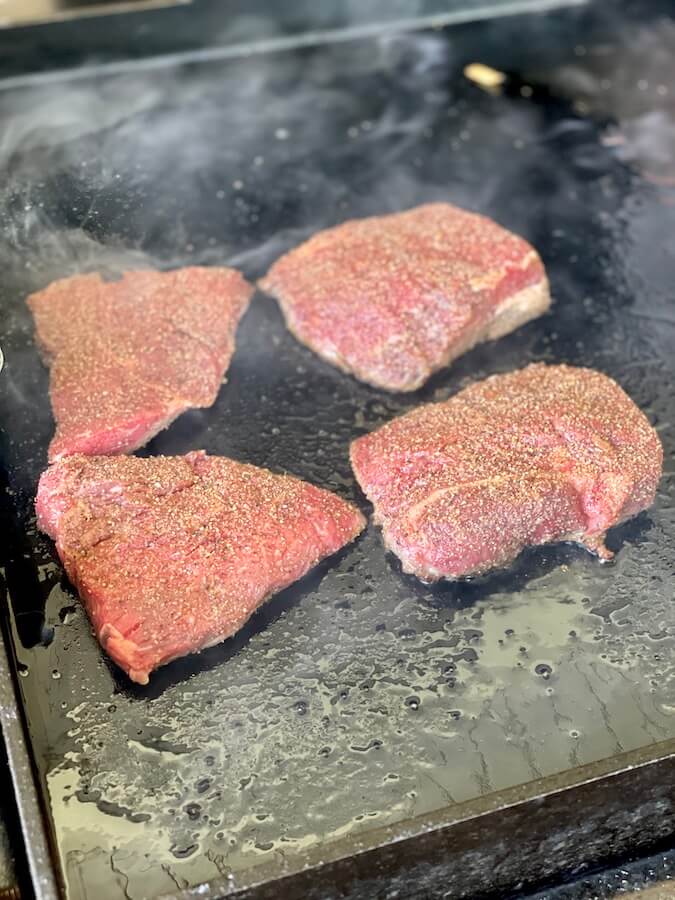
Seasoning your griddle steaks
Be careful about what seasonings you choose to use on your griddle steak, and when you choose to actually season the meat.
Certain seasonings can burn on the griddle if your steak is in one spot for too long, especially if the seasoning contains sugar. If you still want to use your favorite seasoning and season your meat before it goes on the griddle, then be prepared to flip the steaks more frequently so the seasoning is less prone to burning.
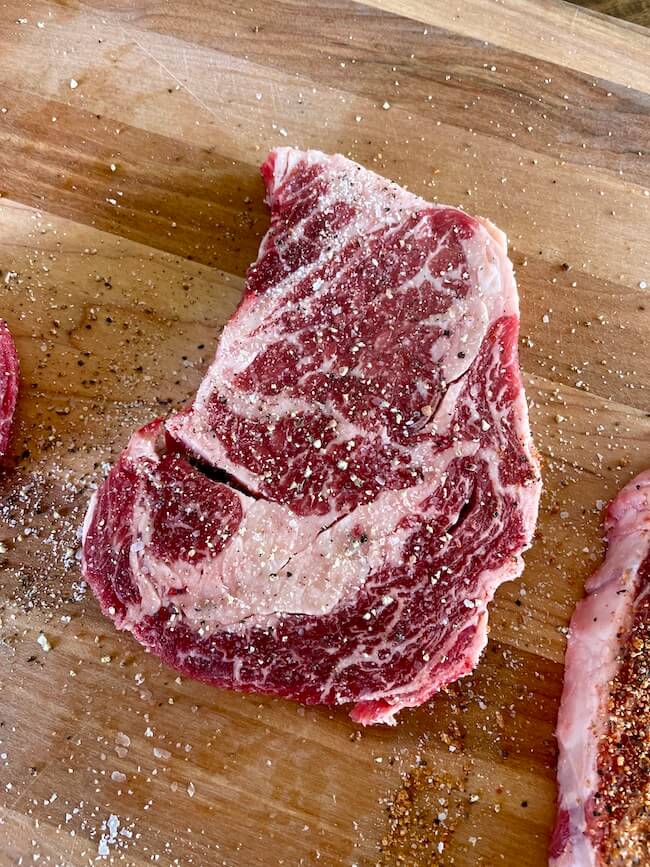
Here are a few suggestions for using seasonings on griddle steaks:
- Do a simple seasoning of salt and pepper only before putting them on the griddle to cook.
- If you want to use your favorite steak seasoning, season the meat about halfway through the cook time, so that the seasoning doesn’t burn during the cooking process.
- Season your steaks before they go on the griddle, but plan on flipping the steaks more frequently so that the seasoning is less likely to burn – if you do this method, you may be sacrificing the steak crust.
- Use a combination of different seasonings and methods – Season with salt and pepper before cooking and season with your favorite steak seasoning part way through the cook, etc.
Flipping the steak often or leaving it alone
This is another hot button topic, and my recommendation for how often to flip your Blackstone steak is based largely on the thickness of the cut that you’re cooking.
For thin cuts of steak:
If you’re cooking thinner steaks on the Blackstone, then you won’t be able to flip them very often without sacrificing the crust. Instead, you should place your thinner steaks down on the griddle and let them cook on the first side to develop that deep crust. Then, use tongs and flip them to the second side and continue to cook until done to your liking.
That is, if you like a crust on your steaks.
Here’s a photo of some thin ribeyes that I cooked on the Blackstone griddle recently:
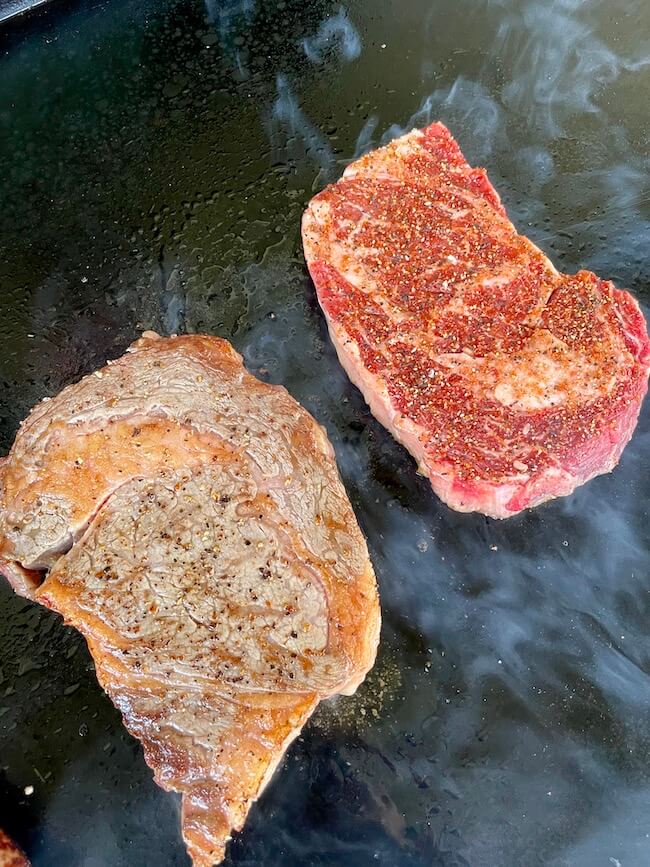
The steak on the left was flipped multiple times, while the steak on the right was still cooking on the first side. As you can see, the ribeye that was flipped every 30-45 seconds did not have a chance to develop a crust.
For thick cut griddle steaks:
Believe it or not, studies have proven that it’s best to flip your steak more than once. You can read more about how flipping steaks multiple times gives you a better result here.
When you only flip your steak once or twice, the top of the steak cools down because it is exposed to the air (instead of sitting on the griddle surface) for a longer period of time. So not only does your steak take longer to cook, but it can also cook less evenly.
In contrast, if you flip your steak frequently, every 30-40 seconds or so, then neither side has a chance to cool because both sides are exposed to the heat source relatively evenly. Your steaks cook more quickly and more evenly edge-to-edge.
I personally like the nice seared crust on my griddle ribeye steaks, so for thick Blackstone steaks, I would recommend searing them on each side first (for about 2-3 minutes), and then starting to flip them more frequently.
Use the griddle hot spots as the sear zone
You can easily have a 100 degree temperature difference on your flat top grill from one side to the next, so use that to your advantage.
Sear your steaks on the hottest area of the griddle to get a nice crust first. Then after searing, you can move your New York strip steak or thick cut steaks over to the cooler side of your griddle and slowly bring them up to temp, instead of continuing to scorch the exterior of the steak.
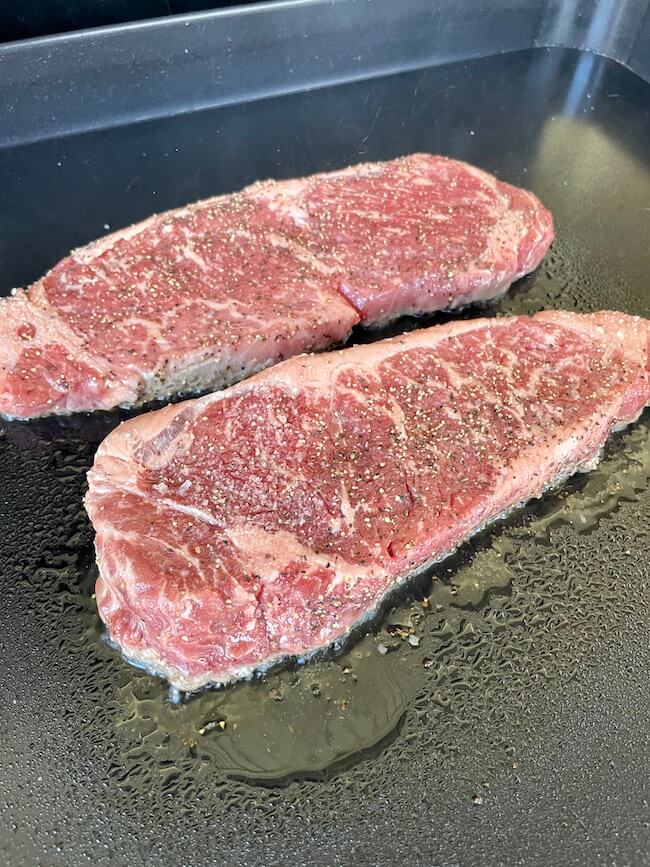
Finishing your Blackstone steak with butter or sauce
Want to elevate the taste of your steak in less than 10 seconds? Just try this simple hack immediately when you pull your steak off the griddle… It’s so good that my wife makes me do it every single time that I make her a steak.
Just add a pad of butter (about 1/2 to 1 tablespoon) to the plate that you will be using for your steak. Then, top the butter with a few dashes of Worcestershire sauce. When your steaks are done cooking, immediately transfer them from the griddle to the plate, right on top of the butter. As the steaks rest on the plate, the butter melts and combines with the Worcestershire sauce and the natural juices from the steak, creating one awesome and easy “plate sauce”.
You can also finish your steaks with a homemade compound butter or a pan sauce made with butter, garlic, and fresh herbs.
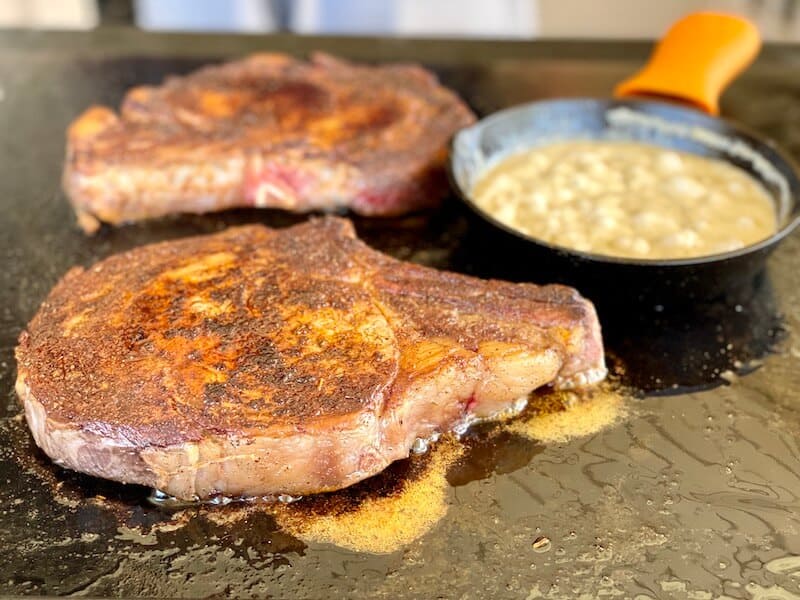
Or since you’re cooking your steaks on the griddle and you have a large cooking surface, then take advantage of that and make a great steak topping at the same time. These steakhouse mushrooms are one of my favorite sides to serve with a Blackstone steak:
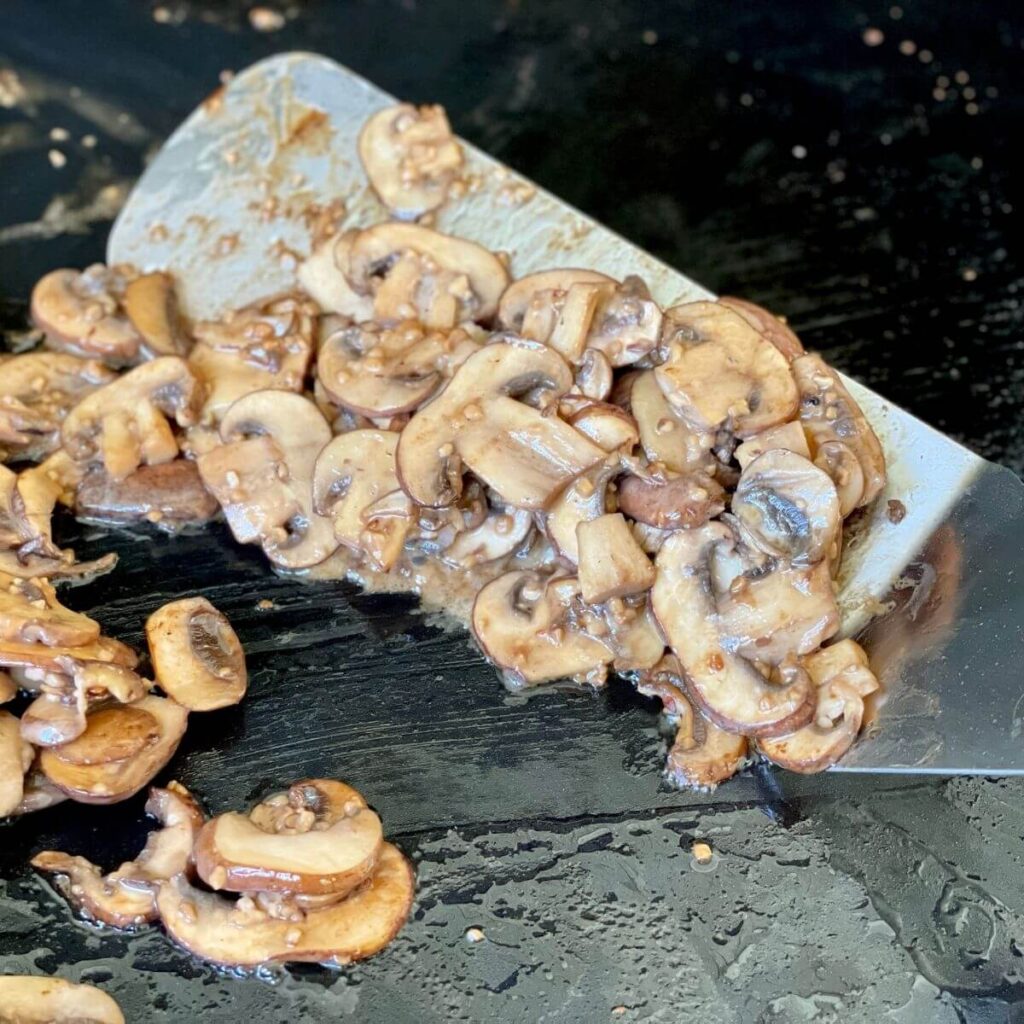
How do I know when my steak is done cooking?
The best way to judge when your steak is done cooking is by inserting an instant read thermometer into the thickest part of the steak. Here is a great visual on the steak internal temperature guidelines:
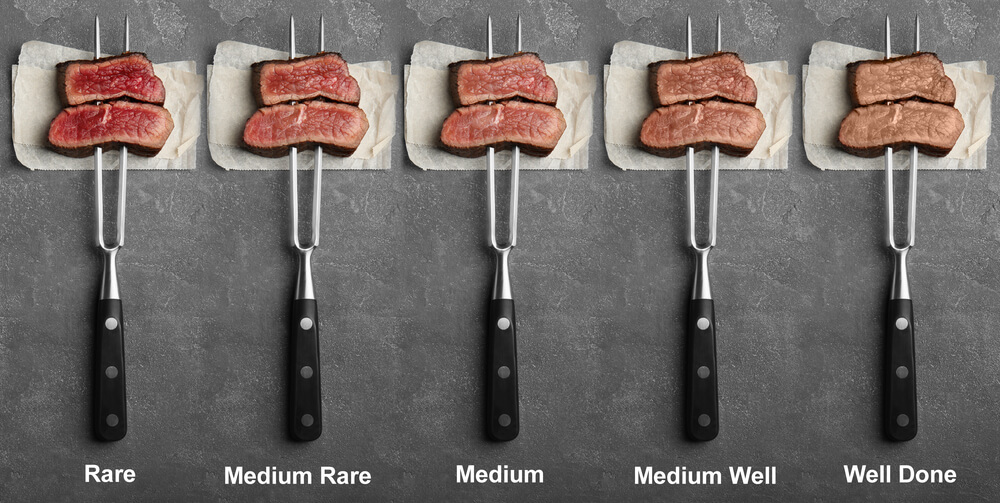
- Rare – 120-125°F (pull the steak off the griddle at 115°F)
- Medium Rare – 130-135°F (pull the steak off the griddle at 125°F)
- Medium – 140-145°F (pull at 135°F)
- Medium Well – 150-155°F (pull the steak off the griddle at 145°F)
- Well Done – 160-165°F (pull the steak off the griddle at 155°F)
*Note – These are suggestions for internal temperature range based on different levels of steak doneness. Keep in mind that the internal temperature of your steaks will continue to rise after you take them off the griddle and as they’re resting, especially if the griddle temp when you pull the steaks is in the mid-400 degree range. Aim for steak resting times of about 5-10 minutes.
FAQ’s about How to Cook Steak on a Griddle
As you can see there is a lot of information that goes into cooking griddle steaks, and much of it is based on personal preference and how you like your steaks done. Here are some other questions that you may be wondering about:
What type of steak should I cook on the griddle?
I recommend a thicker cut of steak for the griddle. That’s because you’ll be able to get a nice sear and crust without overcooking the meat. Look for a ribeye or New York strip steak with good marbling that is about an inch thick. Filets are also great, but they take much longer to cook on the griddle because they’re thicker, and they may require a bit more practice to get just right.
I would not recommend cooking thin steaks on the griddle, unless you prefer a well-done steak.
How do I cook filet mignon on the griddle?
If you’re cooking filet on the griddle, try the method that we used in the high-end steakhouse where I was the chef for 4 years… the rolling method. After you’ve got a nice seared crust on the top and bottom sides of your filet, move the steak to the slightly cooler area on the griddle and begin rolling it on the sides.
After you roll the filet on the griddle for a few minutes, constantly rotating it every few seconds, you can leave it on the griddle surface standing upright on its side for a minute. Then, rotate the filet to the next side area, and repeat. *Note – As mentioned above, what seasonings you are using matters also.
This method helps to prevent burning on the top and bottom of the steak, and it can also be used for other thick cut steaks like a strip or ribeye.
What are the cooking times for griddle steak?
To be honest, I really can’t answer that… There are SO many factors that go in to the cooking times for griddle steaks, like the temperature of your griddle surface, the outside temperature, how you like your steak done, and the thickness of your griddle steaks.
Also, I firmly believe that it’s not about how many minutes to cook your griddle steak, but what internal temperature to look for… the actual time needed to cook is irrelevant. I always say, “Cook to temperature, not to a specific time“.
*Reference the steak internal temperature chart above for more guidance.

Can I reverse sear a Blackstone steak on the griddle?
The reverse sear method involves bringing your steak up to the appropriate internal temp slowly (more of a “low and slow” cooking method) at a lower cooking temperature. Then when the steak is almost done to your liking, you crank up the heat and finish it off with a good sear.
A good reverse sear is more difficult to accomplish on a griddle steak, because the meat is immediately in contact with the heating surface. You don’t have the ambient, 360 degree heat that you would get in an oven or on a grill, or even with a sous video steak.
But, it is possible with a few different methods:
- You could cook the steaks at a lower temperature off of the griddle first, and then use the griddle only to finish the steaks at a higher sear temp. Try cooking your steaks in a smoker or sous vide machine first.
- You can use a wire rack and dome combo to keep your steaks off the griddle surface as they cook. Then, when you’re ready for the sear, place them directly on the surface of the flat top grill. This is what I did in this reverse seared griddle ribeye video… and I even added an aluminum foil packet of smoking wood chips to add a bit of smoke flavor.
Why does my Blackstone steak have a gray color?
Brown meat is good… Gray meat is not. And there are a number of different factors that could cause your griddle steaks to look more gray than brown.
First and foremost, if you don’t allow your steaks to sit in one spot undisturbed for very long, then it’s difficult to build up that nice, deep colored steak crust. If your steaks are thinner, they’re more likely to look gray in color because they’ll probably cook to your desired doneness before they can develop a deep color.
The types of seasonings that you use can also affect the color of your Blackstone steak. Many steak seasonings have red or brown colored spices like paprika or chili powder in them, which can give your steak a different color.
A Simple Blackstone Steak Recipe
As I mentioned before, there are countless ways to cook a steak on the griddle, but here is a simple recipe to get you started. Feel free to use this recipe print out as a guide to help you with the cooking process, and adjust the seasonings and cook times to your liking:

Griddle Steaks
Ingredients
- 2 steaks (ribeye, New York strip steak, sirloin steak, or filet mignon)
- salt and pepper or steak seasoning of your choice
- avocado oil or your favorite high-heat cooking oil
- butter and Worcestershire sauce for optional steak finishing sauce
Instructions
- Prep the steaks. Take the steaks out of the refrigerator and put on the counter for about 20 minutes before cooking. Use paper towels to pat all sides of the steaks dry. Season both sides of the steaks with salt and pepper or your favorite steak seasoning.
- Prep the griddle. Preheat griddle to about 450-500℉. When griddle is heated, add about 1 tablespoon of high heat cooking oil to the surface and spread it around with your spatula.
- Cook the steaks on the griddle. Place the steaks on the oiled griddle, ensuring good even contact with the griddle surface. For thicker steaks: Allow to cook on the first side untouched until a nice crust develops. Then, flip to the second side and continue to cook until a nice crust develops on that side as well. Continue to flip back and forth every 45-60 seconds until steaks are done to your liking. For filet mignon, you'll need to roll the sides of the steak on the griddle as well. For thinner steaks: Allow to cook on the first side untouched until the steak is about half-way cooked through. Then, flip to the second side and continue to cook until the steak reaches your desired temperature.
- Plate and rest the griddle steaks. When an instant read thermometer inserted into the thickest part of the steak reads your desired doneness, remove the steaks from the griddle and transfer to a plate to rest. Steak resting time should be about 5-10 minutes.
- BONUS: STEAK FINISHING SAUCE. This simple 5 second plating hack for steak creates the perfect finishing sauce! Before removing the steaks from the griddle, prepare plates by placing about ½-1 tablespoon of butter on the plate and adding a few dashes of Worcestershire to the butter. When the steaks are done cooking, immediately place them on top of the pad of butter to rest. The heat from the steak will melt the butter and create the perfect "plate sauce".
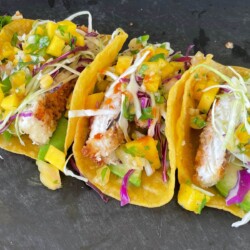
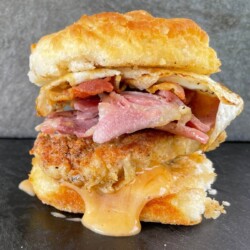
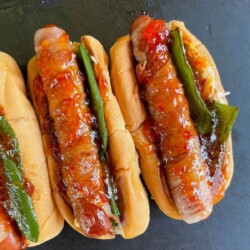
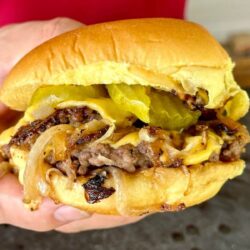
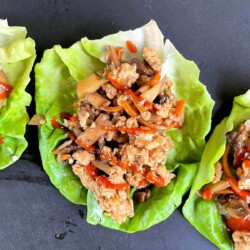


Comments & Reviews
Steve Strunk says
Thanks for all the great tips
Eric Mason says
Neil, this is a great post! Thanks for so much detail.
Sharon Truglio says
thank you. I just got my black stone grill. I love it. ❤️
Live following your steak ideas, could never afford a good steak raising my five kids. I usually bought a chuck steak.
Neal says
Hi Sharon! We’ve actually had many chuck eye steaks, and they are great, too! You can look for the package that specifically says “chuck eye steak” because that is the most tender part of the chuck roast… it’s actually referred to as the “poor man’s ribeye”. You can also check your grocery store’s weekly ad each week, and stock up on ribeye or strip when they go on sale for super cheap. Glad you’re loving your Blackstone!